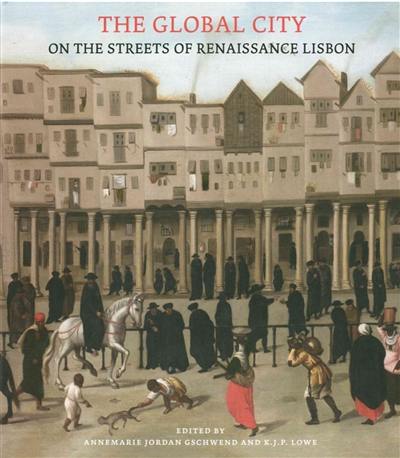
Paru le 13/01/2016 | Relié sous jaquette 295 pages
Tout public
Recently identified by the editors as the Rua Nova dos Mercadores, the principal commercial and financial Street in Renaissance Lisbon, two sixteenth-century paintings, acquired by Dante Gabriel Rossetti in 1866, form the starting point for this portrait of a global city in the early modern period. Focusing on unpublished objects, and incorporating newly discovered documents and inventories that allow novel interprétations of the Rua Nova and the goods for sale on it, these essays offer a compelling and original study of a metropolis whose reach once spanned four continents.
The Rua Nova views, painted by an anonymous Flemish artist, portray an everyday scene on a recognisable street, with a diverse global population. This thoroughfare was the meeting point of all kinds of people, from rich to poor, slave to knight, indigenous Portuguese to Jews and diasporic black Africans.
The volume highlights the unique status of Lisbon as an entrepôt for curiosities, luxury goods and wild animais. As the Portuguese trading empire of the fifteenth and sixteenth century expanded sea-routes and networks from West Africa to India and the Far East, non-European cargoes were brought back to Renaissance Lisbon. Many rarities were earmarked for the Portuguese court, but simultaneously exclusive items were readily available for sale on the Rua Nova, the Lisbon équivalent of Bond Street or Fifth Avenue. Specialized shops offered West African and Ceylonese ivories, raffia and Asian textiles, rock crystals, Ming porcelain, Chinese and Ryukyuan lacquerware, jewellery, precious stones, naturalia and exotic animal byproducts. Lisbon was also a hub of distribution for overseas goods to other courts and cities in Europe. The cross-cultural and artistic influences between Lisbon and Portuguese Africa and Asia at this date will be re-assessed here.
Annemarie Jordan Gschwend is Research Scholar with the Centro de História d'Aquém e d'Além-Mar (Lisbon). Her publications include: Retrato de Corte em Portugal. O Legado de António Moro (1552-1572) (Lisbon, 1994), The Story of Süleyman. Celebrity Eléphants and other Exotica in Renaissance Portugal (Zurich, 2010), and Catarina de Áustria. A Rainha Colecionadora (Lisbon, 2012). From 2008 to 2013 she organized the Getty Foundation research project entitled Hans Khevenhüller, Artistic Agent at the Court of Philip II of Spain, on whom she is completing a monograph. She guest-curated Elfenheine aus Ceylon: Luxusgüter der Renaissance (Muséum Rietberg, Zurich, 2010) and Echt Tierisch ! Die Menagerie des Fürsten (Schloss Ambras, Innsbruck, 2015). In 2011 she was decorated with the Order of Henry the Navigator.
Kate Lowe is Professor of Renaissance History and Culture, and Co-director of the Centre for Renaissance and Early Modem Studies (CREMS), at Queen Mary University of London. She has previously taught at the universities of Hong Kong, Cambridge, Birmingham and the University of North Carolina at Chapel Hill. Her publications on Renaissance Portugal include Cultural Links between Portugal and Italy in the Renaissance (Oxford University Press, 2000) and (co-edited with T.F. Earle) Black Africans in Renaissance Europe (Cambridge University Press, 2005). The main focus of her research is fifteenth-and sixteenth-century Italy, and she is the editor of the I Tatti Studies in Italian Renaissance History monograph séries, published by Harvard University Press.